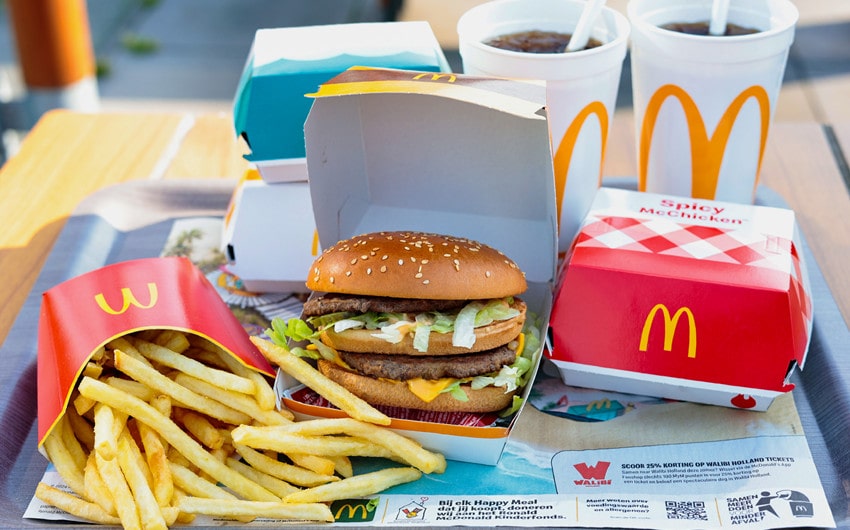How Many Cheeseburgers Does McDonald’s Sell a Day and Why It Matters
Every time you pass a McDonald’s, you might wonder just how many people are eating there—and more specifically, how many cheeseburgers are being sold. The number isn’t just impressive—it’s a window into global consumption, industrial food systems, and how fast food culture has embedded itself into everyday life. When you understand how many cheeseburgers McDonald’s sells a day, you start to see just how massive its reach really is.
The Global Cheeseburger Machine
McDonald’s serves over 69 million customers every single day across more than 100 countries. With over 40,000 restaurants operating worldwide, the company is one of the largest and most influential fast food chains in history. When you think about how many burgers that involves, it’s not hard to see why the cheeseburger plays such a key role in this operation.
Although the McDonald’s menu has expanded to include salads, smoothies, chicken sandwiches, and breakfast items, burgers still form the foundation of the business. Among these, the cheeseburger stands out as a classic staple. Whether you’re in a major U.S. city or a smaller town overseas, you’re likely to find the same basic cheeseburger—bun, patty, cheese, ketchup, mustard, pickles, and onions—served with predictable consistency. This makes it not only easy to produce, but easy to sell at scale.
Behind the scenes, McDonald’s coordinates with thousands of suppliers and franchisees to keep the burger machine running. That kind of coordination allows the company to move massive quantities of food—especially cheeseburgers—every single day, around the globe.
Estimating Daily Cheeseburger Sales
While McDonald’s does not publish daily cheeseburger sales specifically, you can get a reliable estimate by examining known data. The company has reported that it sells around 75 hamburgers every second. That adds up to roughly 4,500 burgers per minute, 270,000 per hour, and over 6 million per day. Cheeseburgers—being one of the core products—make up a large chunk of that figure.
Industry analysts estimate that cheeseburgers account for somewhere between 25% and 30% of all burger sales at McDonald’s. If that’s accurate, the daily number of cheeseburgers sold could fall in the range of 1.5 to 2 million globally. That means every minute, thousands of people across the planet are unwrapping a cheeseburger, taking a bite, and becoming part of a worldwide fast food moment.
These numbers speak to both the operational scale of McDonald’s and the cultural power of the cheeseburger. It’s not just a food item—it’s a symbol of familiarity, convenience, and instant gratification that crosses geographic and demographic lines.
Why McDonald’s Cheeseburgers Are So Popular
The McDonald’s cheeseburger isn’t complex, but that’s exactly the point. Its appeal lies in its simplicity. It’s small, predictable, and affordable. You know what you’re getting every time, and that’s why people keep coming back. Whether you’re on a road trip, on a budget, or just craving something familiar, the cheeseburger hits the mark.
It also helps that the cheeseburger is one of the cheapest items on the menu in many regions. In some locations, it serves as an entry point to the broader McDonald’s experience—something you might order when you’re not hungry enough for a full meal but still want something satisfying. Promotions like “value meals” or “two for $3” deals keep cheeseburgers front and center in the purchasing decisions of millions of customers each day.
Then there’s the nostalgia factor. For many people, the McDonald’s cheeseburger was one of the first fast food items they ever tried. That early emotional connection sticks, often carrying into adulthood and shaping food preferences in subtle but lasting ways.
What a Cheeseburger Tells You About the World
The fact that McDonald’s can sell millions of cheeseburgers a day tells you a lot about global eating habits. It shows how convenience often wins over nutrition, how consistency often wins over creativity, and how cost often outweighs quality in consumer choices. The cheeseburger, in this sense, is more than a food—it’s a cultural shorthand for fast, cheap, and easy eating.
It also highlights the role of fast food in addressing economic disparities. In areas where healthy groceries are expensive or hard to access, a cheeseburger might be one of the more affordable, calorie-dense meals available. That doesn’t make it ideal—but it makes it realistic. For many people, fast food isn’t a treat—it’s a default.
On a larger scale, the cheeseburger reflects how globalized food systems have become. Ingredients are sourced from different countries, processed in massive facilities, and served to millions with near-total uniformity. That’s not just impressive—it’s a glimpse into the mechanics of industrialized food.
How McDonald’s Keeps Up With Demand
Meeting the demand for over a million cheeseburgers a day requires intense planning and precision. McDonald’s relies on a network of regional suppliers who deliver standardized ingredients to each restaurant. Every beef patty, slice of cheese, and burger bun is designed to meet strict specifications, ensuring consistency across every location.
In-store operations are just as efficient. Employees are trained to prepare a cheeseburger in under a minute. The process is automated where possible, with prep lines arranged to minimize errors and maximize speed. Temperature controls, timers, and quality checks are built into every step of the system.
Technology plays a role too. Inventory tracking, predictive sales software, and real-time data allow McDonald’s to anticipate demand and avoid shortages. This system isn’t just impressive—it’s essential. Without it, selling millions of cheeseburgers per day would collapse under the weight of complexity.
What You Can Learn From One Cheeseburger
Looking at McDonald’s cheeseburger sales isn’t just trivia—it’s a way to understand how global systems operate. When you see that more than a million people eat the same product every day, you realize how tightly food, culture, and economy are connected.
The cheeseburger also serves as a reminder of scale. It shows you what’s possible when production is optimized, branding is consistent, and customer demand remains steady. But it also raises questions. What does it mean when something this common is also this processed? What’s the trade-off between convenience and health? And how do you make informed choices when the cheapest option is also the most accessible?
So the next time you eat—or skip—a McDonald’s cheeseburger, you’re participating in a global moment. Millions of people are making the same choice at the same time. Whether that’s something to celebrate or reflect on is up to you.

